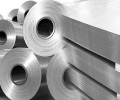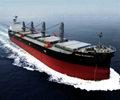Sluggish domestic and international demand may impact steel production

Sluggish demand in the domestic and international markets, combined with a high-cost operating environment, is prompting some steel mills to consider production cuts.
Some of the primary steel mills are mulling a cut in production or advancing the shutdown of facilities. And it’s not just the primary mills. Some of the secondary producers have cut production.
A secondary producer in western India said that production in June was down by 5-10 per cent. Another operating in the eastern part of the country said that the steel price correction had run ahead of raw material correction, resulting in a loss of Rs 2,000-3,000 per tonne, and it had to resort to a production cut in the short run.
Steel prices were in correction mode before the government imposed the export duty, impacting about 95 per cent of the steel export basket. Post-export duty, prices fell further.
But according to companies, users are still in wait-and-watch mode. “There is confusion in the market that prices will go down, so customers are postponing purchases, and inventory is building up. Time has come to take shutdowns so that we don’t end up with high inventory at the end of the quarter,” said a steel company executive.
Some companies believe the high cost would not permit further price corrections. “At the current cost levels, even without the duty, the price is becoming unsustainable,” said a steel producer.
Price drop
Steel prices peaked in April and started correcting in line with global prices.
According to SteelMint data, the average monthly list price of major primary mills for hot-rolled coil (HRC) – a benchmark for flat steel — was at Rs 79,000-79,500 a tonne in April and stood at Rs 65,000-65,500 in June.
During the same period, rebars in long steel moved from Rs 74,800 a tonne to Rs 63,400 a tonne. At the retail end, prices were lower for long and flat steel.
Raw material prices have also moved down since the export levy. Since mid-May, NMDC has corrected prices for iron ore fines by over 35 per cent; lump ore prices have also been reduced.
The government, while imposing a 15 per cent export levy on steel, had raised export duty on iron ore fines and lumps with the iron content of 58 per cent and above from 30 to 50 per cent to lower cost. On pellets, it has imposed an export duty of 45 per cent.
Incidentally, KIOCL, under the ministry of steel, said in a stock exchange filing recently that its pellet plant operation at Mangalore had been suspended because of unviable operation due to the levy of duty on the export of pellets by the government.
The other critical raw material for steel – coking coal – has cooled to below $400 a tonne level from peak levels of $670 a tonne. But steel producers are pointing to the high cost of inventory.
“What we bought in March, April, and even May was very expensive and is coming into our stocks. Producing at a very high-cost level when it’s not making economic sense is a question that everybody is looking at today,” said one of the producers.
Hetal Gandhi, Director, CRISIL Research, said that while domestic prices have corrected by over 10 per cent from May’s average, global prices (FOB) in China have only fallen by 5 per cent, making imports more expensive than domestic prices.
Steel demand
Both domestic demand and export markets are currently slow. Consequently, bookings have dropped, said a company executive.
Gandhi said that European steel prices peaked at $1600-1650 per tonne in March and have corrected to $900-950 per tonne as of the first week of June.
In the domestic market, companies say that demand from the automotive segment is good, but other segments are picking up slowly.
Steel demand in April-May 2022 rose 11 per cent year-on-year, but Gandhi pointed out that it was primarily a low base effect as volumes were lower sequentially. Steel demand in April-May 2021 was impacted by the second Covid wave.
Source: Business Standard

 Hellenic Shipping News Worldwide Hellenic Shipping News Worldwide, Online Daily Newspaper on Hellenic and International Shipping
Hellenic Shipping News Worldwide Hellenic Shipping News Worldwide, Online Daily Newspaper on Hellenic and International Shipping





















 PG-Software
PG-Software